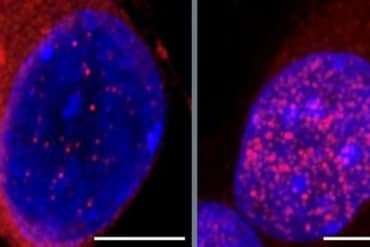Summary: Researchers found a live eight-centimeter Ophidascaris robertsi roundworm in the brain of a 64-year-old Australian woman. The parasitic roundworm, typically found in carpet pythons, was successfully extracted following brain surgery.
The patient likely contracted the parasite from touching or consuming a type of native grass, Warrigal greens, contaminated with the python’s fecal matter. This alarming case raises concerns about the increasing risk of zoonotic diseases as human and animal habitats continue to overlap.
Key Facts:
- This is the first-ever human case of Ophidascaris robertsi roundworm, which is common to carpet pythons.
- The roundworm was found in the woman’s brain, a first for any mammalian species.
- The patient likely contracted the parasite from Warrigal greens beside a lake where the python had shed the parasite through its feces.
Source: Australian National University
The world’s first case of a new parasitic infection in humans has been discovered by researchers at The Australian National University (ANU) and the Canberra Hospital after they detected a live eight-centimetre roundworm from a carpet python in the brain of a 64- year-old Australian woman.
The Ophidascaris robertsi roundworm was pulled from the patient after brain surgery – still alive and wriggling. It is suspected larvae, or juveniles, were also present in other organs in the woman’s body, including the lungs and liver.
“This is the first-ever human case of Ophidascaris to be described in the world,” leading ANU and Canberra Hospital infectious disease expert and co-author of the study Associate Professor Sanjaya Senanayake said.
“To our knowledge, this is also the first case to involve the brain of any mammalian species, human or otherwise.
“Normally the larvae from the roundworm are found in small mammals and marsupials, which are eaten by the python, allowing the life cycle to complete itself in the snake.”
Ophidascaris robertsi roundworms are common to carpet pythons. It typically lives in a python’s oesophagus and stomach, and sheds its eggs in the host’s faeces. Humans infected with Ophidascaris robertsi larvae would be considered accidental hosts.
Roundworms are incredibly resilient and able to thrive in a wide range of environments. In humans, they can cause stomach pain, vomiting, diarrhoea, appetite and weight loss, fever and tiredness.
The researchers say the woman, from southeastern New South Wales in Australia, likely caught the roundworm after collecting a type of native grass, Warrigal greens, beside a lake near where she lived in which the python had shed the parasite via its faeces.
The patient used the Warrigal greens for cooking and was probably infected with the parasite directly from touching the native grass or after eating the greens.
Canberra Hospital’s Director of Clinical Microbiology and Associate Professor at the ANU Medical School, Karina Kennedy, said her symptoms first started in January 2021.
“She initially developed abdominal pain and diarrhoea, followed by fever, cough and shortness of breath. In retrospect, these symptoms were likely due to migration of roundworm larvae from the bowel and into other organs, such as the liver and the lungs. Respiratory samples and a lung biopsy were performed; however, no parasites were identified in these specimens,” she said.
“At that time, trying to identify the microscopic larvae, which had never previously been identified as causing human infection, was a bit like trying to find a needle in a haystack.
“In 2022, she began experiencing subtle changes in memory and thought processing and underwent a brain MRI scan which demonstrated an atypical lesion within the right frontal lobe of the brain.”
The patient was first admitted to a local hospital in late January 2021 after suffering three weeks of abdominal pain and diarrhoea, followed by a constant dry cough, fever and night sweats. By 2022, the patient was experiencing forgetfulness and depression, prompting an MRI scan.
A neurosurgeon at Canberra Hospital explored the abnormality and it was then that the unexpected eight-centimetre roundworm was found. Its identity was later confirmed through parasitology experts, initially through its appearance and then through molecular studies.
Associate Professor Senanayake said the world-first case highlighted the danger of diseases and infections passing from animals to humans, especially as we start to live more closely together and our habitats overlap more and more.
“There have been about 30 new infections in the world in the last 30 years. Of the emerging infections globally, about 75 per cent are zoonotic, meaning there has been transmission from the animal world to the human world. This includes coronaviruses,” he said.
“This Ophidascaris infection does not transmit between people, so it won’t cause a pandemic like SARS, COVID-19 or Ebola. However, the snake and parasite are found in other parts of the world, so it is likely that other cases will be recognised in coming years in other countries.”
Associate Professor Karina Kennedy said the important message from this case is about general food safety, particularly when gardening or foraging for food where there may be other wildlife in close proximity.
“People who garden or forage for food should wash their hands after gardening and touching foraged products. Any food used for salads or cooking should also be thoroughly washed, and kitchen surfaces and cutting boards, wiped downed and cleaned after use,” she said.
The patient continues to be monitored by the team of infectious disease and brain specialists.
“It is never easy or desirable to be the first patient in the world for anything. I can’t state enough our admiration for this woman who has shown patience and courage through this process,” Associate Professor Senanayake said.
The researchers’ findings have been described in the journal Emerging Infectious Diseases.
The research team included scientists and infectious diseases, immunology and neurosurgical doctors from ANU, Canberra Health Services, CSIRO, the University of Melbourne and the University of SydneyThe world’s first case of a new parasitic infection in humans has been discovered by researchers at The Australian National University (ANU) and the Canberra Hospital after they detected a live eight-centimetre roundworm from a carpet python in the brain of a 64- year-old Australian woman.
The Ophidascaris robertsi roundworm was pulled from the patient after brain surgery – still alive and wriggling. It is suspected larvae, or juveniles, were also present in other organs in the woman’s body, including the lungs and liver.
“This is the first-ever human case of Ophidascaris to be described in the world,” leading ANU and Canberra Hospital infectious disease expert and co-author of the study Associate Professor Sanjaya Senanayake said.
“To our knowledge, this is also the first case to involve the brain of any mammalian species, human or otherwise.
“Normally the larvae from the roundworm are found in small mammals and marsupials, which are eaten by the python, allowing the life cycle to complete itself in the snake.”
Ophidascaris robertsi roundworms are common to carpet pythons. It typically lives in a python’s oesophagus and stomach, and sheds its eggs in the host’s faeces. Humans infected with Ophidascaris robertsi larvae would be considered accidental hosts.
Roundworms are incredibly resilient and able to thrive in a wide range of environments. In humans, they can cause stomach pain, vomiting, diarrhoea, appetite and weight loss, fever and tiredness.
The researchers say the woman, from southeastern New South Wales in Australia, likely caught the roundworm after collecting a type of native grass, Warrigal greens, beside a lake near where she lived in which the python had shed the parasite via its faeces.
The patient used the Warrigal greens for cooking and was probably infected with the parasite directly from touching the native grass or after eating the greens.
Canberra Hospital’s Director of Clinical Microbiology and Associate Professor at the ANU Medical School, Karina Kennedy, said her symptoms first started in January 2021.
“She initially developed abdominal pain and diarrhoea, followed by fever, cough and shortness of breath. In retrospect, these symptoms were likely due to migration of roundworm larvae from the bowel and into other organs, such as the liver and the lungs. Respiratory samples and a lung biopsy were performed; however, no parasites were identified in these specimens,” she said.
“At that time, trying to identify the microscopic larvae, which had never previously been identified as causing human infection, was a bit like trying to find a needle in a haystack.
“In 2022, she began experiencing subtle changes in memory and thought processing and underwent a brain MRI scan which demonstrated an atypical lesion within the right frontal lobe of the brain.”
The patient was first admitted to a local hospital in late January 2021 after suffering three weeks of abdominal pain and diarrhoea, followed by a constant dry cough, fever and night sweats. By 2022, the patient was experiencing forgetfulness and depression, prompting an MRI scan.
A neurosurgeon at Canberra Hospital explored the abnormality and it was then that the unexpected eight-centimetre roundworm was found. Its identity was later confirmed through parasitology experts, initially through its appearance and then through molecular studies.
Associate Professor Senanayake said the world-first case highlighted the danger of diseases and infections passing from animals to humans, especially as we start to live more closely together and our habitats overlap more and more.
“There have been about 30 new infections in the world in the last 30 years. Of the emerging infections globally, about 75 percent are zoonotic, meaning there has been transmission from the animal world to the human world. This includes coronaviruses,” he said.
“This Ophidascaris infection does not transmit between people, so it won’t cause a pandemic like SARS, COVID-19 or Ebola. However, the snake and parasite are found in other parts of the world, so it is likely that other cases will be recognised in coming years in other countries.”
Associate Professor Karina Kennedy said the important message from this case is about general food safety, particularly when gardening or foraging for food where there may be other wildlife in close proximity.
“People who garden or forage for food should wash their hands after gardening and touching foraged products. Any food used for salads or cooking should also be thoroughly washed, and kitchen surfaces and cutting boards, wiped downed and cleaned after use,” she said.
The patient continues to be monitored by the team of infectious disease and brain specialists.
“It is never easy or desirable to be the first patient in the world for anything. I can’t state enough our admiration for this woman who has shown patience and courage through this process,” Associate Professor Senanayake said.
The researchers’ findings have been described in the journal Emerging Infectious Diseases.
The research team included scientists and infectious diseases, immunology and neurosurgical doctors from ANU, Canberra Health Services, CSIRO, the University of Melbourne and the University of Sydney
About this neuroscience research news
Author: James Giggacher
Source: Australian National University
Contact: James Giggacher – Australian National University
Image: The image is credited to Neuroscience News
Original Research: Open access.
“Human Neural Larva Migrans Caused by Ophidascaris robertsi Ascarid” by Karina Kennedy et al. Emerging Infectious Diseases
Abstract
Human Neural Larva Migrans Caused by Ophidascaris robertsi Ascarid
We describe a case in Australia of human neural larva migrans caused by the ascarid Ophidascaris robertsi, for which Australian carpet pythons are definitive hosts. We made the diagnosis after a live nematode was removed from the brain of a 64-year-old woman who was immunosuppressed for a hypereosinophilic syndrome diagnosed 12 months earlier.







